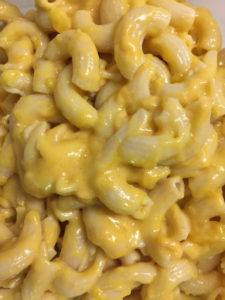The USS Natoma Bay CVE 62 and The Battle of Okinawa
by Lucinda DeWitt, daughter of John W. DeWitt, Jr. (Feb. 5, 1926 – Feb. 14, 2018)

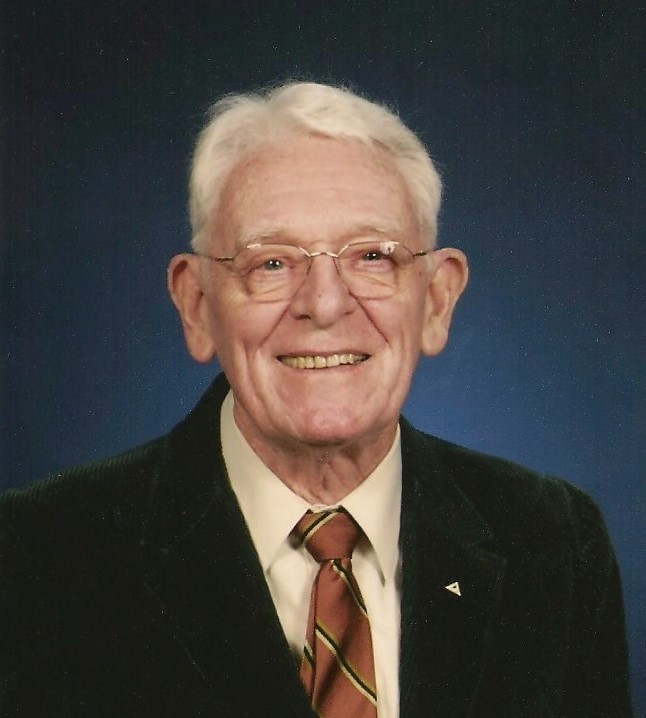
As part of the Commemoration of 75 years since the end of WWII (September 2, 1945), the Escort Carriers Sailors & Airmen Association asked for memories of the heroes who served and The Battle of Okinawa. This is a version of the piece I will be submitting.
Any mention of The Battle of Okinawa reminds me how close I came to never even being born. My father, John W. DeWitt, Jr. served the U.S. Navy from 1943 through 1946. Most of that time was spent as an Electronic Technician’s Mate on board the USS NATOMA BAY CVE 62.


Based on his stories across the years, dad’s favorite time in the Navy was spent on Majuro (part of the Marshall Islands). Here are a photo and two of his drawings from that time.
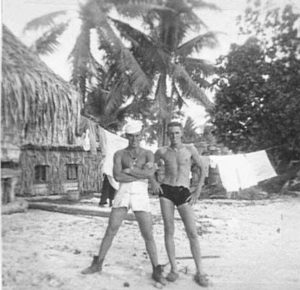
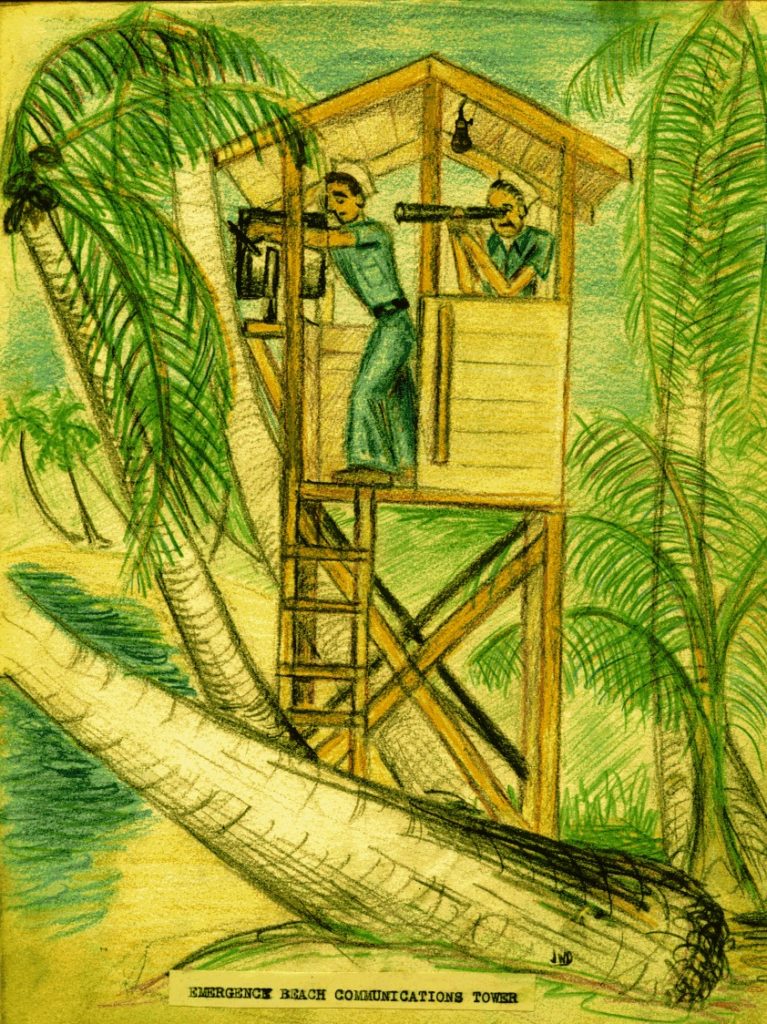

While Majuro may have been dad’s favorite place, by far his most memorable story is of what happened to the USS NATOMA BAY on June 7, 1945 (during The Battle of Okinawa).
(For a full account of the USS NATOMA BAY’s participation in The Battle of Okinawa, please see: https://natomabaycve62.org/logbook/Okinawa)
As recorded in the LogBook compiled after the war by John Sassano and Bob Wall:
Natoma Bay is participating in her second of the ten greatest battles in history, the other being the Liberation of the Philippines. She is destined to see many of her group come and go during the long and perilous assault on Okinawa. Luck, the Grace of God, and her combat readiness is a determining factor in allowing her to survive the entire campaign.
Although we are not to emerge unscathed, we are to be fortunate enough to support and survive the entire campaign from pre-invasion to security of the island.
And later:
On 7 June we are to experience one of our most unforgetable days – here then is that day as recorded in the history of the USS NATOMA BAY:
At 0635, 7 June, after having maneuvered through typhoon weather, NATOMA BAY was closed by a Zeke, broad on the port quarter and low on the water. Changing course, it came in over the stern, fired incendiary ammunition at the bridge, and on reaching the island structure, nosed over and crashed into the flight deck. The engine, propeller and bomb tore a hole in the flight deck, 12 by 20 feet, while the explosion of the bomb damaged the deck of the foc’sle and the anchor windlass beyond repair and ignited a nearby fighter. Three of the CVE’s crew and one officer of VC 9 were wounded. One ship’s officer was killed. A second Zeke was splashed by the ship’s port batteries. The damage control party immediately extinguished the blaze and set about emergency repairs. The next strike was canceled, but the following one against Miayako Shima, took place as scheduled at 1030.
. . .
The kamikaze that hit the Big NB probably came from Formosa or an underground hangar on Myaka Jima. At the time we were hit, we were were relieving a British unit that had gone out of the area to refuel. We had been assured that the area was quiet and we should expect no trouble. How unprophetic!
Further details from the War Diary of June 7, 1945:
The blast and debris from the impact on the flight deck punctured the starboard gas tanks on an FM2 which was spotted on the catapult and set it afire. This plane, with its attendant risk, was quickly disposed of by catapulting it into the sea.
. . .
Gasoline fires on the forecastle deck were quickly controlled. The 20mm strafing fire had caused smoldering fires on the deck planking where the bullets, apparently incendiary, had penetrated. These were chopped out and repairs were immediately started on the flight deck.
. . .
The attack had left a hole in the flight deck plating 12 feet wide, beginning two feet to port of the center line of the deck and extending to port, and 20 feet in depth from a point just aft of the forward end of the deck. This hole was decked over semi-permanently and the flight deck shored up and braced across its entire forward section sufficiently so that it could be used for flyaway and catapult-launches. These repairs were completed by 1500 while the regular operating schedule was resumed two hours after the attack. From recovered fragments, it is believed that the bomb carried was a type 99 Navy SAP 63 kg bomb.
A series of photographs tell the story:


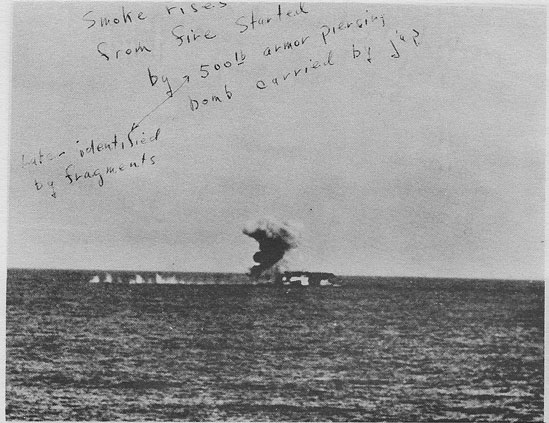

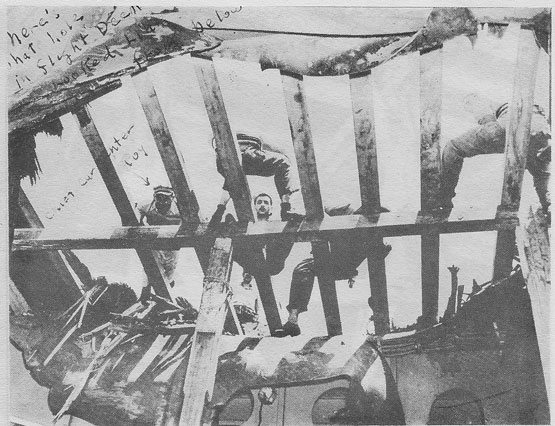
This incident led to the USS NATOMA BAY gaining the nickname “One Lucky Ship”. The remains of the kamikaze were melted down and molded into small horseshoe charms for the men to keep as a reminder of their luck.
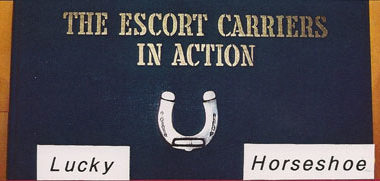
Little did they know that Okinawa would be the USS NATOMA BAY’s final battle:
After our escapade at Sakishima (Myaka Jima) Natoma Bay returned to her duties of supporting the troops ashore at Okinawa and flying our CAP and ASW patrols. On 24 June we were to leave the area and steam for Guam for repairs. No mention was made of retirement from the forward area and a return to the States. We were all pretty sure that with a new flight deck and a new camouflage paint job that our next destination had to be Japan itself.
By the time those repairs were made, the war was over.
As I read over the entire story of CVE participation in The Battle of Okinawa (in the August 2020 CVE Piper Newsletter), I was once again reminded of the huge sacrifices made by so many . . . and of just how lucky I was that my dad came home from the war . . . and 15 years later, I was born!

















